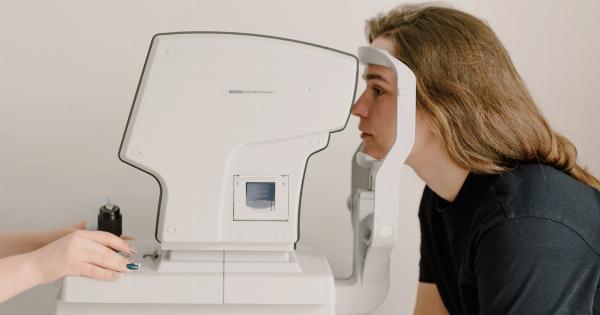Iodine is an essential mineral needed for the proper functioning of the thyroid gland. It plays a crucial role in the production of thyroid hormones, which are responsible for regulating metabolism, growth, and development.
Insufficient iodine intake can lead to iodine deficiency, resulting in various health problems. This article aims to provide you with information on how to self-diagnose iodine deficiency using images, enabling you to identify potential symptoms and take appropriate action.
Understanding Iodine Deficiency
Iodine deficiency occurs when the body does not obtain enough iodine through the diet. It is estimated that nearly one-third of the global population is at risk of iodine deficiency, making it a significant public health concern.
The severity of iodine deficiency can vary, ranging from mild to severe.
Common Symptoms of Iodine Deficiency
Iodine deficiency can manifest through various visible symptoms. By closely observing your body and paying attention to these signs, you can gain insights into whether iodine deficiency may be affecting you. Some common symptoms include:.
1. Swelling of the Neck (Goiter)
One of the most common signs of iodine deficiency is the development of a goiter. A goiter refers to the abnormal enlargement of the thyroid gland, which is located in the front of the neck.
This swelling is caused by the thyroid gland’s attempt to compensate for the lack of iodine required for hormone production. If you notice any unusual swelling or enlargement in your neck area, it is crucial to consult a healthcare professional for proper evaluation.
2. Weight Gain or Difficulty Losing Weight
Iodine deficiency can disrupt the normal functioning of the thyroid gland, leading to fluctuations in metabolism. This disruption may result in unexplained weight gain or difficulty in shedding excess weight.
If you experience these symptoms despite maintaining a balanced diet and regular exercise routine, it is worth considering iodine deficiency as a potential cause.
3. Fatigue and Weakness
Iodine deficiency can affect energy levels and overall vitality. If you frequently feel fatigued, weak, or lacking stamina, it could be a result of insufficient iodine intake.
It is essential to differentiate between general tiredness and persistent fatigue that may be attributed to iodine deficiency.
4. Dry, Flaky Skin and Hair Loss
Iodine plays a significant role in maintaining the health of your skin, nails, and hair. Inadequate iodine levels can lead to dryness and flakiness of the skin, as well as hair loss.
If you notice an unusual increase in hair shedding or experience persistent dryness of the skin, iodine deficiency could be a contributing factor.
5. Impaired Cognitive Function
Iodine deficiency can negatively impact cognitive function, particularly in pregnant women and young children.
It is vital for proper brain development, and insufficient iodine during critical periods can lead to intellectual disabilities and learning difficulties. If you or your child are experiencing persistent cognitive impairments, consulting a healthcare professional for a thorough evaluation is recommended.
6. Mood Swings and Depression
Iodine is involved in the regulation of hormones that affect mood and mental well-being. Inadequate iodine levels can lead to imbalances in these hormones, resulting in mood swings, irritability, and even depression.
If you experience unexplained changes in mood or persistent feelings of sadness, seeking medical advice may be beneficial.
7. Menstrual Irregularities
Irregularities in the menstrual cycle could be an indication of iodine deficiency in some cases. Insufficient iodine levels can disrupt the hormonal balance, leading to irregular periods, heavy bleeding, or even delayed puberty.
If you face persistent menstrual irregularities, it is advisable to consult a healthcare professional for accurate diagnosis and appropriate treatment.
Assessing Your Iodine Levels Through Images
While the presence of symptoms can raise suspicion of iodine deficiency, a more accurate self-assessment can be done through the use of images. The following methods can help you evaluate your iodine levels:.
1. Thyroid Self-Examination
Stand in front of a mirror with your neck fully exposed. Gently tilt your head back and take a sip of water. Swallow and observe the lower part of your neck, just above the collarbone.
If you notice any bulging, swelling, or enlargement, it may indicate a potential goiter caused by iodine deficiency. However, it is important to note that only a healthcare professional can provide a confirmed diagnosis.
2. Beta-Carotene Absorption Test
An indirect method to assess iodine levels is the beta-carotene absorption test. Take a capsule of beta-carotene supplement, typically available at pharmacies or health food stores. Monitor your skin tone over the next 24 hours.
If your body efficiently converts beta-carotene into vitamin A, your skin should maintain a golden tone. However, if your skin tone remains pale or fades quickly, it might suggest low iodine levels.
3. Iodine Patch Test
The iodine patch test is another image-based method to assess iodine levels. Apply a small amount of iodine solution (commonly used for disinfection purposes) to a discrete area of your inner arm or thigh. Allow it to dry naturally.
If the stain disappears within a few hours, it may indicate insufficient iodine levels. However, it is crucial to consult a healthcare professional for a comprehensive evaluation and accurate diagnosis.
Preventing and Treating Iodine Deficiency
If you suspect iodine deficiency based on self-assessment methods or experience symptoms associated with the condition, it is essential to seek professional medical advice.
A healthcare provider can conduct thorough diagnostic tests and provide appropriate treatment options. Depending on the severity of iodine deficiency, treatments may include:.
1. Iodine Supplements
Supplementing with iodine is a common treatment for iodine deficiency. Your healthcare professional can prescribe iodine supplements in the form of tablets or drops, based on your specific needs.
It is important to follow the recommended dosage and duration of supplementation to avoid potential side effects.
2. Dietary Changes
Including iodine-rich foods in your diet can help prevent and alleviate iodine deficiency. Seafood, seaweed, dairy products, eggs, and iodized salt are excellent sources of iodine.
However, it is crucial to consult a healthcare professional or registered dietitian to determine appropriate dietary modifications based on your individual health status and requirements.
3. Public Health Measures
Iodine deficiency is a significant public health issue in various regions. In response, many countries have implemented iodine fortification programs, where iodine is added to salt and other commonly consumed food items.
These public health measures help ensure adequate iodine intake for the overall population, reducing the prevalence of iodine deficiency.
Take Control of Your Iodine Levels
Being aware of the signs and symptoms of iodine deficiency and learning how to self-diagnose using images empowers you to take control of your health.
While self-assessment methods can provide valuable insights, it is essential to consult a healthcare professional for an accurate diagnosis and appropriate treatment. By addressing iodine deficiency promptly, you can support your thyroid function and overall well-being.





























